|
L’Oréal Uses AMFG’s MES Software to Streamline 3D Printing https://ift.tt/3m9mEWh Personal care and beauty brand L’Oréal has used 3D printing many times in the last several years, for applications ranging from product design to bioprinting hair and skin. The company, which has an international portfolio of 35 diverse yet complementary brands, seems on the verge of upping its usage of the technology, as it has just chosen to use AMFG‘s Additive MES software to help streamline its AM workflow and optimize rapid prototyping at its 3D printing lab. This investment by L’Oréal in MES and workflow automation software for AM shows the faith that the brand puts in 3D printing to get the job done.
The company makes thousands of prototypes each year at its 3DLab in Clichy, France, and managing this level of volume production has been tough. L’Oréal engineers had to send emails with their 3D design files and project requirements, or even bring USB drives to the lab to have their files 3D printed. 3DLab managers also had to calculate the cost and shipping of orders, which came with its own set of difficulties.
With features such as a Supplier Integration Network, for AM supply chain coordination, and a Holistic Build Analysis Tool, for instant estimates of how full a machine build is without the use of nesting, AMFG’s MES software solution helps its clients scale their AM operations, manage their workflows, and achieve automated, streamlined processes. Specifically, L’Oréal is using the software to speed up the turnaround time for its prototypes and standardize internal order handling using data visualization tools and instant price calculation software. With AMFG’s ordering portal, L’Oréal designers and engineers will be able to track their order status, as well as order and re-order 3D printed parts with ease.
In digitizing its workflow with AMFG’s MES software, L’Oréal engineers will be able to convert files into various other formats without the use of file conversion software, as well as analyze and repair common file errors automatically. In addition, the software’s backend system will allow the company’s 3DLab assistants to visualize and analyze 3D designs before placing an order, track incoming requests, and price parts with custom formulas.
According to the case study, L’Oréal chose AMFG’s MES and workflow management software for its modular functionality, as well as its ability to provide custom development. The beauty brand has been using the software for nearly a year, and L’Oréal’s 3DLab team has made note of several improvements, such as better coordination of internal processes, more flexibility in the internal ordering process, increased turnaround of prototypes, enhanced operations visibility, and automation of steps that were previously manual.
According to a recent report by SmarTech Analysis, “Additive Manufacturing in the Factory of the Future: Opportunities and Markets,” automation in both distributed AM networks and local AM processes is a “critical issue.” The report shows how 3D printing, post-processing, and automation can lead to lower fixed costs and smaller manufacturing footprints.
(Source: AMFG) Printing via 3DPrint.com | The Voice of 3D Printing / Additive Manufacturing https://3dprint.com March 31, 2021 at 06:18PM
0 Comments
MINI Electric Pacesetter Features 3D Printed Parts Made from Recycled Carbon Fiber https://ift.tt/3sE2vub Though BMW may have discontinued MINI’s mass customization program, it has applied 3D printing in a more unique and interesting way in its FIA Formula E Safety Car, the MINI Electric Pacesetter. The new pace vehicle features 3D printed components made from recycled carbon fiber. As discussed in our series on carbon fiber 3D printing, the material is not the easiest to recycle, given the fact that the material is meant to be durable and chopped fibers have less utility than continuous fiber reinforcement. Fortunately, as a newer manufacturing segment that regularly uses chopped carbon fiber-reinforced plastic, there are many opportunities to recycle the material. And, here, it seems that BMW-owned MINI has found one. The styling of the Pacesetter is based on the MINI JCW GP racer, including similar fender blades and wheels, along with the same roof spoiler, but with a light bar on top. What may draw the eyes of our readers, however, is the fact that the exterior components related to aerodynamics are all made from 3D printed, recycled carbon fiber, including the fender blades, spats, and rear wing. Inside the vehicle, you’ll find 3D printed parts. Specifically the removable cushions padding the racing buckets are 3D printed and could potentially be adapted to fit a rider’s shape, weight and taste. These features and more reduce the overall weight of the car, which is about 286 lbs (130 kgs) less than the MINI Cooper SE. In turn, this allows the Pacesetter to reach 60 mph in 6.7 seconds, compared to the 7.3 seconds of the Cooper SE, even though it features the same powertrain.
Printing via 3DPrint.com | The Voice of 3D Printing / Additive Manufacturing https://3dprint.com March 31, 2021 at 08:36AM
https://ift.tt/3sFZfhF
Evonik Launches New PEEK Filament for Industrial 3D Printing Applications https://ift.tt/2PfPSqK As one of the top specialty chemicals companies, with activity in more than 100 different countries around the world, Evonik knows a thing or two when it comes to 3D printing materials. Last year, the company developed and introduced a PEEK, or polyether ether ketone, filament for FDM 3D printing of medical implants, and this week has announced its latest PEEK 3D printing material. The filament, launched under the brand name INFINAM® PEEK 9359 F, is meant for industrial 3D printing applications with the more common extrusion-based (FFF/FDM) technologies.

INFINAM® PEEK 9359 F high performance polymer as a metal replacement for additive manufacturing of demanding industrial plastic parts. Evonik’s new high-performance, ready-to-use INFINAM® PEEK 9359 F material is a chemical- and high temperature-resistant polymer, and sounds like it would be a good choice for 3D printing industrial plastic parts, rather than using metal material. PEEK is a pretty fascinating material: in addition to medical applications, the thermoplastic’s high strength and continuous service temperatures, low flame smoke and toxicity, and excellent thermal stability and chemical inertia, mean that it’s often used to make highly demanding automotive and aerospace components.
INFINAM® PEEK 9359 F comes in a natural color, with a diameter of 1.75 mm, and is wound onto 500 g spools that can be used in most standard FFF and FDM 3D printers for PEEK materials. The polymer has a lot of interesting properties: beyond what we’ve already listed, it has hydrolysis resistance, or inherent flame retardancy, as well as high mechanical strength, great wear and fatigue resistance, and low sliding friction. Parts 3D printed using this material are said to be capable of withstanding short-lasting temperature effects of over 300℃, or long-lasting temperature effects of 250℃. According to Evonik’s website, the material’s unique crystallization offers much better adhesion between vertical layers, and has a better wave transmission performance than metal. Speaking of metal, Evonik says that parts 3D printed with its new INFINAM® PEEK 9359 F weigh about 80% less, and are 30% tougher, than equivalent parts made with stainless steel. With all of these combined properties, the material should work well for 3D printing lightweight, high-performance parts for demanding applications, like in the automotive, aerospace, and oil & gas industries, that would normally be made with metal. Evonik’s Additive Manufacturing Innovation Growth Field is focused on creating and manufacturing new high-performance 3D printing materials. As such, the company has organized its range of ready-to-use AM materials here, under its new INFINAM® brand. (Source/Images: Evonik) Printing via 3DPrint.com | The Voice of 3D Printing / Additive Manufacturing https://3dprint.com March 31, 2021 at 08:06AM Understanding the Risks and Benefits of 3D Printing Resins https://ift.tt/3sQKA3z While vat photopolymerization, such as stereolithography (SLA) and digital light processing (DLP), is the oldest method of 3D printing, it’s only recently made its way to casual users. SLA... View the entire article via our website. Printing via 3DPrint.com | The Voice of 3D Printing / Additive Manufacturing https://3dprint.com March 31, 2021 at 07:36AM 3D Printing News Briefs, March 31, 2021: Prodways, Zortrax, Artec 3D, MolyWorks https://ift.tt/3dkVnwj We’re talking about materials, business, and awards in today’s 3D Printing News Briefs. First up, Prodways has introduced a new material for the mass 3D printed production of transparent... View the entire article via our website. Printing via 3DPrint.com | The Voice of 3D Printing / Additive Manufacturing https://3dprint.com March 31, 2021 at 07:24AM 3D scanning and 3D printing: The modern engineering ecosystem https://ift.tt/3rDIJNR As additive manufacturing techniques and technologies continue to mature, more and more industry sectors, companies and design teams are realizing the tremendous potential 3D printers, used with in... View the entire article via our website. Printing via 3DPrint.com | The Voice of 3D Printing / Additive Manufacturing https://3dprint.com March 31, 2021 at 07:24AM
https://ift.tt/39wBGAn
Marcos Torres https://ift.tt/3wfih0z Marcos Torres is a Spanish graphic artist whose visual narrative is dominated by the cult of colour and visual impact. His work is characterised by a strong connection with music iconography, movies, and Pop and Rock and Roll mythology. Marcos has developed all of his graphic production through screen printing, and works side by side with printers, adding the printing work to the creative process.
“There is obviously a passion for the aesthetic glorification of pop icons, but I try not to base my work exclusively on it, and I also like to represent them in a different context or give them a different role. I love to play with that. I like to see most of my designs as frames of an imaginary movie, and that the interesting thing for me is to invite the viewer to imagine the rest of the story. All this is at a conceptual level and about the inspirations of the content of my work.”
“From the first time I stepped foot in a screen print workshop, I fell in love with the technique, the process, the smells, the colours, and working side by side with the printers. I think of it as part of the creative process, and probably the most exciting part of all. The fact that the pints are done slowly, colour by colour, and until the end you don’t see the complete design, gives the process an exceptional emotion, to say the least.”
www.marcostorres.com Printing via People of Print https://ift.tt/2DhgcW7 March 31, 2021 at 05:50AM
https://ift.tt/2PKbLOu
Archivio Tipografico: Reduction Printing for Art Books https://ift.tt/3fqfk7v Illustrator Danilo Mondino, part of the Archivio Tipografico team, is experimenting with a new series of letterpress prints. In the series, Danilo obtains the matrices by manually working on the printing surface by carving linoleum or cutting a 1mm thick PVC sheet, which he then overprints to create figures and volumes.
Printing via People of Print https://ift.tt/2DhgcW7 March 31, 2021 at 04:45AM
https://ift.tt/3cC1ixI
We Tried 4 Best Mailchimp Alternatives in 2021 – Here’s Our Feedback https://ift.tt/3wbyjIT The fact that you’re reading this article means that you’re currently using Mailchimp, but it doesn’t fit your needs. You’re looking for something better, that’s more cost-effective and with more functionalities and features Don’t get me wrong – Mailchimp is an excellent product. It’s one of the pioneers in the email marketing space. But over the years, it became a giant, old dinosaur who brings you more pain than pleasure. Fortunately, you don’t need to spend dozens of hours and your energy on finding the perfect Mailchimp alternative. We did the heavy-lifting for you. We went out, tried, and tested the four best Mailchimp alternatives on the market. We used each tool for about a week and got to know the software in and out. The alternatives we have tested are:
In this article, we will share our in-depth feedback and thoughts on each of these Mailchimp alternatives. We even went one step further, and unlike other review articles on the subject, we evaluated each product by specific criteria. This will help you to easily compare multiple alternatives and find the right fit for you. The criteria we used are:
With no further delay, let’s find the best Mailchimp alternative for you! If you don’t have time to read our in-depth feedback on all platforms, you can check our Overview section below. Table Of Contents Mailchimp alternatives: overview of the best email marketing platformsOverall comparison
Mailchimp overviewTo understand Mailchimp alternatives, we will quickly look into Mailchimp itself. As we all know, Mailchimp is one of the most popular email marketing solutions on the market. It allows you to build landing pages, get email subscribers and send different email campaigns to your users. But since Mailchimp has been on the market for so long, it became a huge, robust, and complicated platform. Therefore, Mailchimp isn’t the right fit for everyone. The five biggest downsides of MailchimpOpinions about Mailchimp vary. A lot of people like the product overall, but a lot of others don’t. Here are the common problems with Mailchimp reported by other users and confirmed by us (after we tested it):
These are the five primary and most frustrating shortcomings of Mailchimp. Of course, as with every product, many other things don’t work precisely the way we want them to, but let’s not get petty here. On the other hand, let’s take a look at Mailchimp’s advantages. Mailchimp’s advantagesThe purpose of this article is to give you the most honest feedback on all Mailchimp alternatives and the state of the email marketing software industry. So let’s not be too critical towards Mailchimp. It also offers some great stuff and has certain advantages. So, what are the things Mailchimp does well?
Mailchimp’s pricingMailchimp has a free plan that allows you to have 2000 users in your list and send up to 10,000 emails per month. Although the free plan is pretty basic, it’s great for people who are just starting and want a simple tool to send their campaigns immediately. The minimal pricing plan starts at $9,99/mo for up to 500 contacts. If you start with the free plan, have 2000 contacts, and subscribe to the basic plan, expect to start paying $30,99/mo. The Standard plan, for up to 25,000 contacts, costs $230/mo. 
Now that we understand Mailchimp, let’s analyse the best Mailchimp alternatives on the market. Mailchimp’s score
GetResponse – all-in-one marketing solution
We’re well aware that this is our tool, and we don’t want to brag about it. The idea of this article is to present you with an objective view of the best Mailchimp alternatives. Let’s get back to the topic. GetResponse is the all-in-one marketing solution for small, medium, and enterprise businesses. So let’s dive into GetResponse. 
Seven advantages of GetResponse over MailchimpUnlike Mailchimp, GetResponse is an all-in-one platform that offers you more functionalities. With GetResponse, you can engage with your customers on various channels:
and others. Mailchimp offers some of these channels, but the difference is that GetResponse implemented all of this more intuitively. In other words, with GetResponse, creating landing pages, getting subscribers, and making your autoresponders or email campaigns is way easier than with Mailchimp. Here are the most significant advantages of GetResponse:

GetResponse’s shortcomings
GetResponse’s pricingAlthough GetResponse doesn’t have a free plan, you can start using it with a 30-day trial with no credit card required. Paid plans start at $15/mo for up to 1000 subscribers and go up to $99/mo for the professional package. To put things in perspective, the plan with the same number of features as Mailchimp (or maybe even more) costs $179/mo for up to 25,000 people, while Mailchimp costs $230/mo. 
GetResponse’s score
GetResponse’s overview as a Mailchimp alternativeHere are the main differences between GetResponse and Mailchimp:
Who should use GetResponse? GetResponse is the right fit for you if you’re looking for an all-in-one and easy-to-use marketing toolkit that can help you build your entire sales/marketing funnel and grow your sales, whether you’re just starting out or you’re an established enterprise. MailerLite – easy-to-use email marketing platform
MailerLite is another Mailchimp alternative that allows you to build great email marketing campaigns and engage with your users. MailerLite’s advantages
MailerLite’s shortcomings
It doesn’t include a lot of templates – MailerLite is really a lite version of an email marketing tool. Hence, it doesn’t have a lot of pre-defined email or landing page templates you can use. MailerLite’s pricingMailerLite has fairly simple pricing. There are only two plans: free and premium. The premium plan supports most of the things that other alternatives have (although it still lacks some of the features that GetResponse has, for example) However, MailerLite is the most cost-effective Mailchimp alternative we’ve evaluated, probably because of its simplicity. This makes it perfect for small companies on a tight budget for which email marketing is not the main channel for engaging with customers. If you have 25,000 people on your list, expect to pay $120/mo. 
MailerLite’s score
MailerLite’s overview as a Mailchimp alternativeThe biggest advantage of MailerLite over Mailchimp is that it gives you way more features in the free plan than Mailchimp. On the other hand, although Mailchimp is very slow, its features, such as landing pages, have better functionality than MailerLite’s. Long story short, if you’re on a very tight budget and email marketing isn’t the most important channel for you, then MailerLite is the right choice. Read more: GetResponse vs. MailerLite ConvertKit – built for online creators
The third Mailchimp alternative we’ve tested is ConvertKit. ConvertKit is a powerful email marketing software similar to Mailchimp and aimed mainly at creators. It mostly focuses on enabling everyday people to monetize their passion, start projects that they can market, grow their business and increase their email list. Essentially, if you’re a blogger, YouTuber, podcaster, marketer, or anyone who wants to earn money online by monetizing their following rate, this might be a great fit for you.
Let’s look into the details of its abilities. ConvertKit’s advantages
ConvertKit’s shortcomings
ConvertKit’s pricingAs already mentioned, their plans are not the most affordable on this list. The Creator plan starts at $29/month, and it increases as you pass 1000 subscribers. The price increase can become quite steep as you begin climbing the popularity ladder. 
Additionally, its Creator plan doesn’t offer:
To unlock these features, you’ll have to opt for the “Creator Pro” package, which is double the price. If you have 25,000 subscribers, expect to pay $199/mo for the basic plan and $279/mo for the Pro plan. ConvertKit’s score
ConvertKit overview as a MailChimp alternativeIt’s no surprise that ConvertKit works better than Mailchimp when considering many of the features we’ve tested. But that comes at a price. While you can use Mailchimp for free, its standard plan offers only so much for $15 a month. In our experience, the website builder is slow, the UI can often be buggy and frustrating, and their customer support is not the best. With all that in mind, if you can afford to pay double the price for the basic Convert Kit plan, you will enjoy it more. ConvertKit is best suited for digital creators, people who sell courses, ebooks, and other types of digital products. Read more: GetResponse vs. ConvertKit AWeber – perfect for small businesses
AWeber is another attractive Mailchimp alternative. It’s best for small businesses, entrepreneurs, bloggers, podcasters, and all other online content creators who want to scale their business. AWeber’s advantages
AWeber’s shortcomings
AWeber’s pricingAs you can see, the default pricing plans allow up to 25,000 subscribers, and if you want to go beyond that, you will have to contact them and request a custom quote plan. 
AWeber’s score
AWeber as a Mailchimp alternativeAWeber is an excellent alternative to Mailchimp since they offer similar functionalities. AWeber is also a little bit easier to use than Mailchimp. AWeber might be more expensive, but sometimes it is better to pay a little extra money to gain additional options. For example, AWeber offers more templates. However, keep in mind that Mailchimp allows you to design your emails from scratch (in the paid plans). Mailchimp also has more detailed and advanced segmentation options. In the end, it all comes down to what you prefer and need the most. AWeber is excellent for beginners who don’t possess any technical knowledge, while Mailchimp is the right choice for more experienced tech-savvy users. Read more: GetResponse vs. AWeber A final comparison of the four best Mailchimp alternatives in 2021Here’s the final comparison table: 
What’s the best Mailchimp alternative for you?Based on our four-week long research and testing of four different Mailchimp alternatives, we’ve concluded that every product is a perfect fit for a specific group of people. So:
And,
No credit card needed. Author’s note: This comparison is accurate on March 30th, 2021. We do our best to keep it as accurate as possible, and we check it on a regular basis, however, if you want to acquaint yourself with the offer of our competitors, you should check it at their official website or contact their representatives. Printing via GetResponse Blog https://ift.tt/2Xap2TD March 30, 2021 at 09:39AM Ricoh to Supply Impossible Objects Composite 3D Printing to European Market https://ift.tt/2PI2AOR A new partnership between Impossible Objects and Ricoh 3D will make new composite-enhanced parts available to European Ricoh 3D customers. The parts, created via Impossible Objects’ much-touted CBAM process, will be strong, light, and have high chemical resistance. Currently, the CBAM process can make parts up to 10 times quicker than traditional FDM printing, on sheets up to 12 x 12 inches. It uses high-performance polymers like Nylon and PEEK, and the company claims a wide range of reinforcement materials, from “standard” composite fillers like carbon fiber and fiberglass to more unconventional reinforcements like silk and cotton. According to Impossible Objects, CBAM is capable of printing with a higher variety of additives than other 3D printing processes because the powder isn’t melted when it’s initially deposited.
This is their first time working with Ricoh 3D, whose AM service bureau lets customers send in part designs for workshopping and printing. Composites like carbon fiber-PEEK and carbon fiber-PA12 are now available as print objects through Ricoh 3D’s AM service bureau, making it the first such provider of CBAM 3D printing services.
Carbon fiber 3D printing is still a relatively small niche, with just a handful of companies selling their machines. While AREVO has demonstrated the ability to 3D print parts as large as a bicycle frame with continuous carbon fiber composites and Ingersoll, Thermwood and Cincinnati can printed massive parts with chopped carbon fiber reinforcement, there is no technology quite like Impossible Objects’. Though this is just one partnership, it could be a significant one, given Ricoh’s status as a company with a $7.87 market cap. It demonstrates both the value of CBAM in a service bureau setting, which is a microcosm of large-scale manufacturing, and a broadening of Ricoh’s interest in new materials and technologies. Printing via 3DPrint.com | The Voice of 3D Printing / Additive Manufacturing https://3dprint.com March 30, 2021 at 08:02AM |
Categories
All
Archives
April 2023
|










 Marcos’ artistic education began when he was 15 years old, when he entered the artistic baccalaureate in Ibiza for four years. He then moved to Valencia to specialise in graphic design. In the meantime, and after going through different advertising agencies and design studios, Marcos began to design and sell collections of screen printed t-shirts, the success of which allowed him to quit his job as a graphic designer and dedicate his time exclusively to their printing. From there, he made the transition to artistic screen printing, exhibitions, and the production and sale of artistic screen prints.
Marcos’ artistic education began when he was 15 years old, when he entered the artistic baccalaureate in Ibiza for four years. He then moved to Valencia to specialise in graphic design. In the meantime, and after going through different advertising agencies and design studios, Marcos began to design and sell collections of screen printed t-shirts, the success of which allowed him to quit his job as a graphic designer and dedicate his time exclusively to their printing. From there, he made the transition to artistic screen printing, exhibitions, and the production and sale of artistic screen prints. “I try to make my influences act in the most unconscious way possible, to be able to create in the most free and direct way what I am passionate about” says Marcos. The first of his passions, and which therefore has a strong influence on his work, is music. Not only is there a strong musical link in his work, there is also the world of cinema, pop iconography of the 60s and 70s, pulp comics, and television.
“I try to make my influences act in the most unconscious way possible, to be able to create in the most free and direct way what I am passionate about” says Marcos. The first of his passions, and which therefore has a strong influence on his work, is music. Not only is there a strong musical link in his work, there is also the world of cinema, pop iconography of the 60s and 70s, pulp comics, and television.
 In regards to his graphic style, Marcos describes this as “something that has taken shape on its own”, and that he can only attribute to his training in graphic design and advertising illustration at a professional level. His work also hints to the posters of the early Soviet masters and their geometric movements and bands of colour that generate various optical effects. He comments; “The power of geometric rays of light, and these kinetic games (very close to Op Art) have been a constant influence”. Marcos is also a “huge fan” of the epic pop-style from comic book masters like Jim Steranko and Guy Peellaert. Considering his absolute passion for the powerful graphic style of the psychedelic posters of the 60s, it is very likely that there is also influence from artists like the one and only Victor Moscoso, among others.
In regards to his graphic style, Marcos describes this as “something that has taken shape on its own”, and that he can only attribute to his training in graphic design and advertising illustration at a professional level. His work also hints to the posters of the early Soviet masters and their geometric movements and bands of colour that generate various optical effects. He comments; “The power of geometric rays of light, and these kinetic games (very close to Op Art) have been a constant influence”. Marcos is also a “huge fan” of the epic pop-style from comic book masters like Jim Steranko and Guy Peellaert. Considering his absolute passion for the powerful graphic style of the psychedelic posters of the 60s, it is very likely that there is also influence from artists like the one and only Victor Moscoso, among others. Normally the scenes or the protagonists of Marcos’ works appear in his head and then take shape sometimes quickly and naturally, and sometimes in a more complex and prolonged way. The process is never the same. Sometimes it begins with a sketch by hand that becomes real by shaping it little by little, and sometimes it begins with a photograph, or parts of them, combined, which end up being drawn on a computer or tablet. In any case, sooner or later they end up taking shape by being drawn in a vector format with the computer, regardless of whether their origin is made by hand.
Normally the scenes or the protagonists of Marcos’ works appear in his head and then take shape sometimes quickly and naturally, and sometimes in a more complex and prolonged way. The process is never the same. Sometimes it begins with a sketch by hand that becomes real by shaping it little by little, and sometimes it begins with a photograph, or parts of them, combined, which end up being drawn on a computer or tablet. In any case, sooner or later they end up taking shape by being drawn in a vector format with the computer, regardless of whether their origin is made by hand.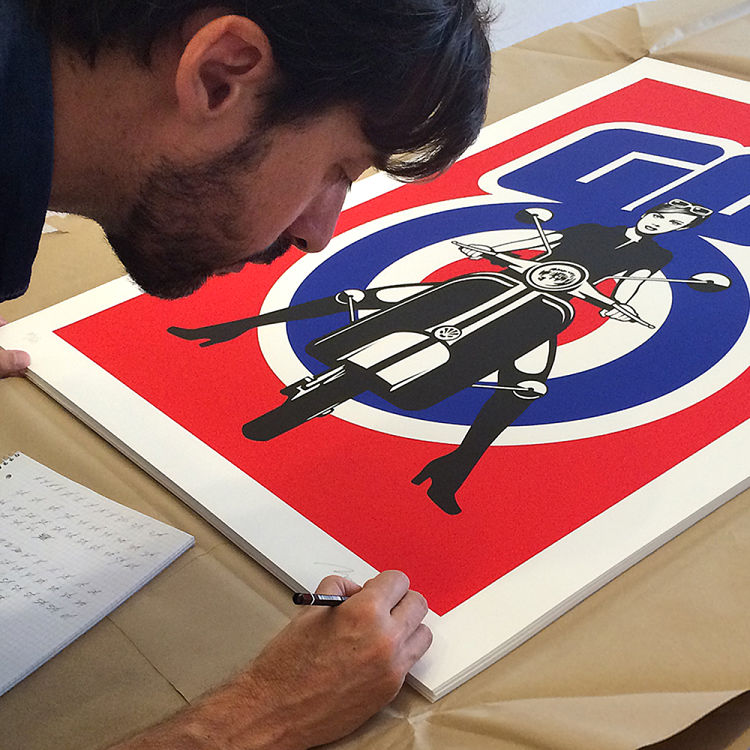
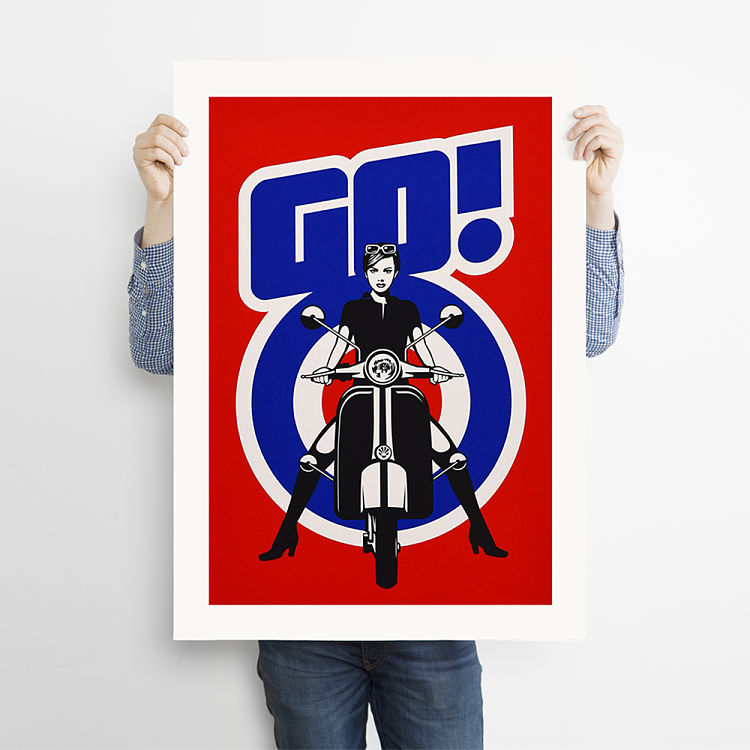 “I always knew that my work was made to be screenprinted. The thematic direction of the designs, the masses of colour, the optic and geometrical games, the previous reference of my pop art heroes…,” says Marcos. Twenty years ago he travelled to Barcelona obsessed with finding someone who could guide him with reproducing his designs through screen printing. His guide turned out to be Josep Tobella, (former president of FESPA, a global federation of national Associations for the screen printing), who then introduced him to Ramón Sayans, “an elegant, incredibly kind man, an industry legend, and one of the pioneers of screen printing in Spain”. With Ramon and his team, Marcos made the vast majority of his screen prints. However, he has also recently started collaborating with Dolly Demoratti from Mother Drucker Berlin.
“I always knew that my work was made to be screenprinted. The thematic direction of the designs, the masses of colour, the optic and geometrical games, the previous reference of my pop art heroes…,” says Marcos. Twenty years ago he travelled to Barcelona obsessed with finding someone who could guide him with reproducing his designs through screen printing. His guide turned out to be Josep Tobella, (former president of FESPA, a global federation of national Associations for the screen printing), who then introduced him to Ramón Sayans, “an elegant, incredibly kind man, an industry legend, and one of the pioneers of screen printing in Spain”. With Ramon and his team, Marcos made the vast majority of his screen prints. However, he has also recently started collaborating with Dolly Demoratti from Mother Drucker Berlin. Marcos is currently organising an exhibition that showcases a selection of his designs that he has made on t-shirts. This exhibition takes screen printing on a t-shirt out of the context of “fashion” and into the art gallery, reflecting on why screen printing on garments is considered fashion, and screen printing the same on paper is considered art. He is also planning on reimagining some of his prints as large-format three-dimensional works made from vinyl, wood, and neon lights.
Marcos is currently organising an exhibition that showcases a selection of his designs that he has made on t-shirts. This exhibition takes screen printing on a t-shirt out of the context of “fashion” and into the art gallery, reflecting on why screen printing on garments is considered fashion, and screen printing the same on paper is considered art. He is also planning on reimagining some of his prints as large-format three-dimensional works made from vinyl, wood, and neon lights.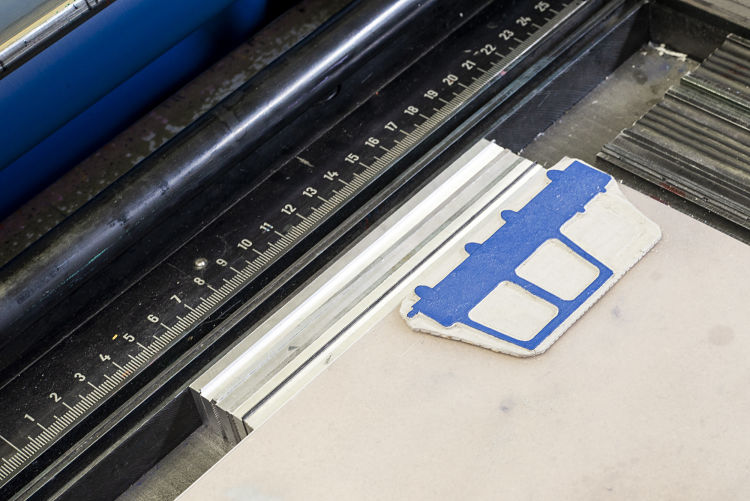


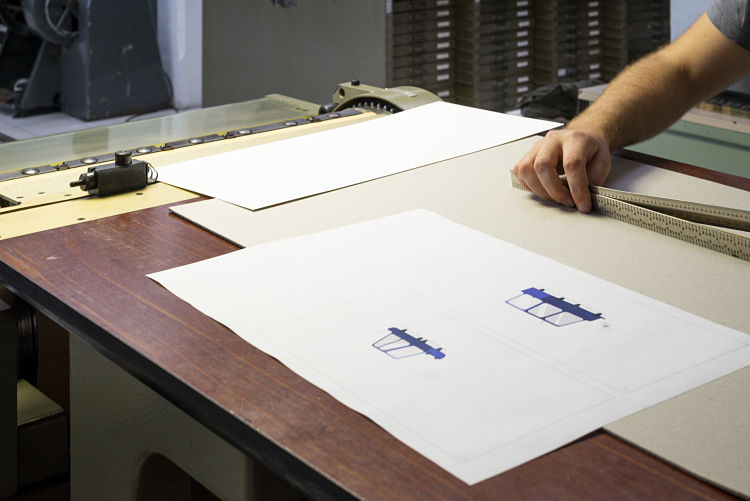
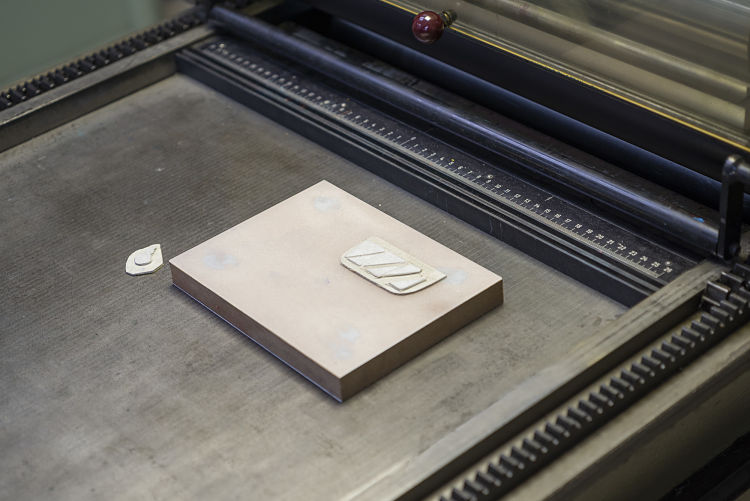
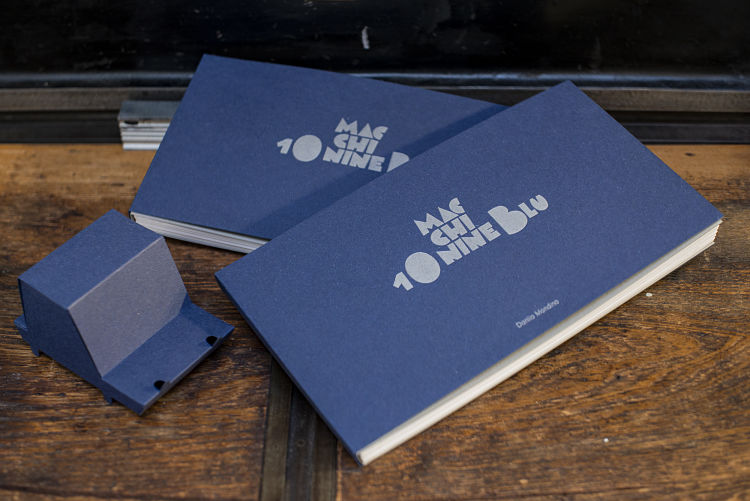
 Archivio Tipografico is a lively, collaborative space where both new and old generations of printers, typographers, and designers gather to develop artistic and commercial printing projects. Its mission is to preserve and sustain the craft of composition with movable type and high-quality letterpress printing, while also giving these historic practices new life in contemporary work.
Archivio Tipografico is a lively, collaborative space where both new and old generations of printers, typographers, and designers gather to develop artistic and commercial printing projects. Its mission is to preserve and sustain the craft of composition with movable type and high-quality letterpress printing, while also giving these historic practices new life in contemporary work.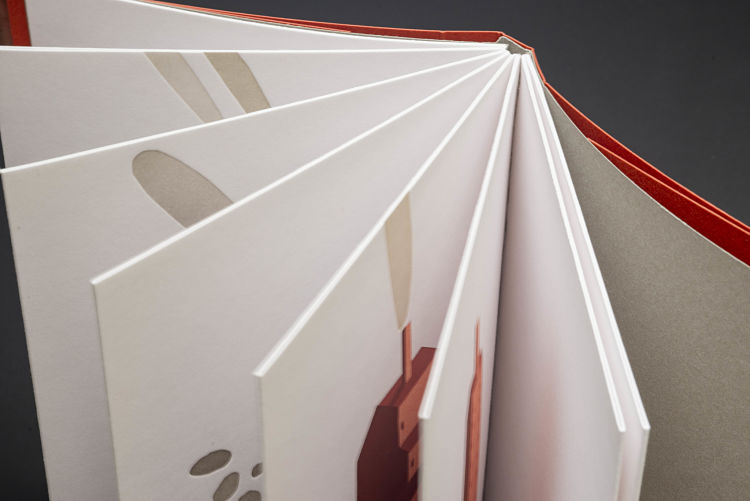


 RSS Feed
RSS Feed
